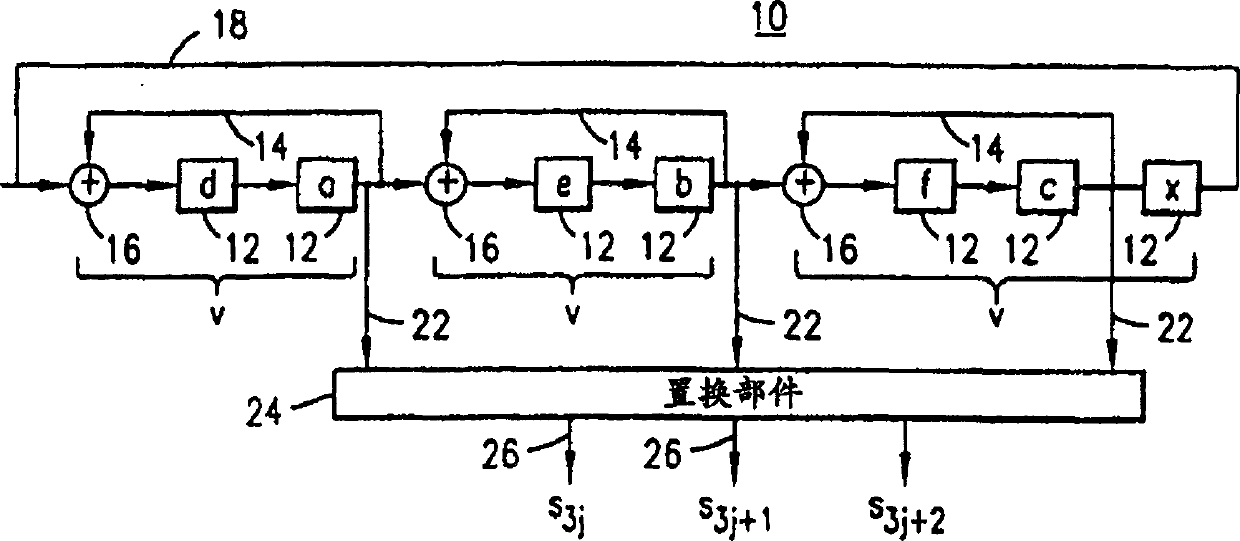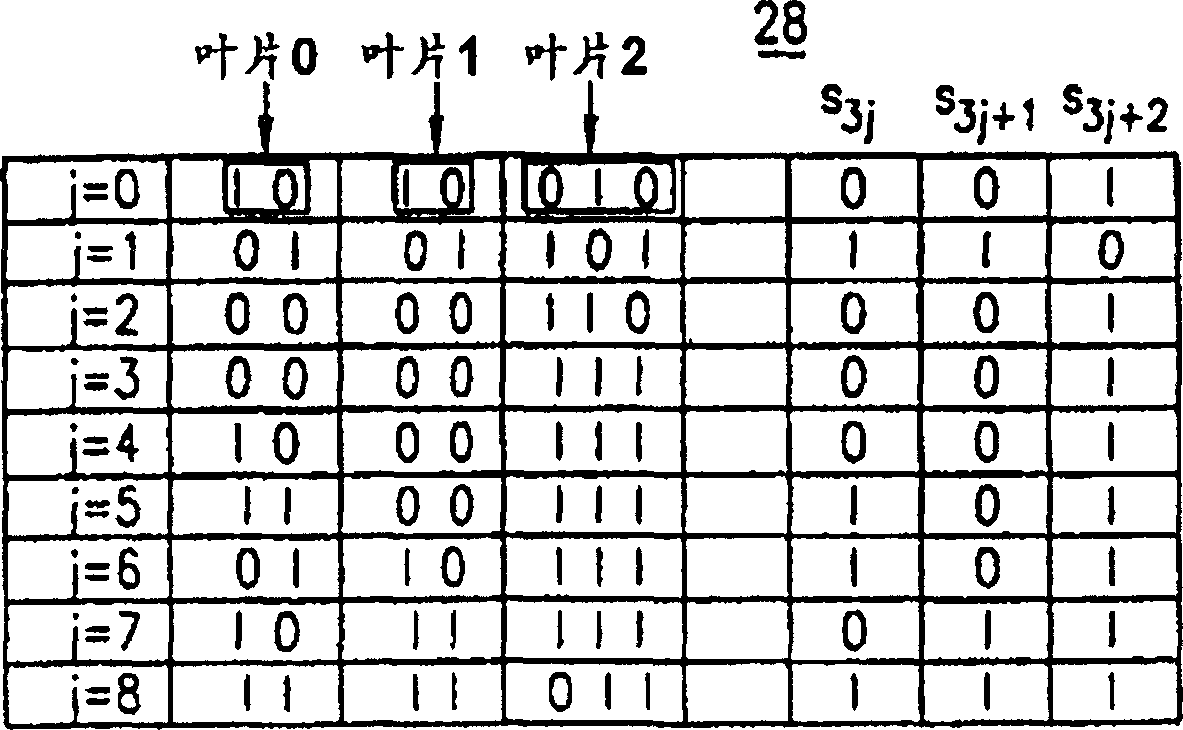Pseudo-random squence generator and associated method
A pseudo-random sequence and generator technology, used in random number generators, instruments, digital transmission systems, etc., can solve a large number of problems such as operations
- Summary
- Abstract
- Description
- Claims
- Application Information
AI Technical Summary
Problems solved by technology
Method used
Image
Examples
Embodiment Construction
[0057] Referring first to FIG. 1 , an exemplary windmill generator, indicated generally at 10 , is shown consisting of a plurality of time delay elements 12 divided into v blade groups. Here, the blade length L of each blade i , each blade v includes a feedback loop 14 connected to the input of the summing unit 16 . The rightmost (shown as vane v) is further connected in a feedback loop 18 to the leftmost vane v.
[0058] A tap 22 is taken from each blade v and provided to a permutation unit which performs a permutation, where an identical permutation is performed according to the sequence provided by the taps 22 . The output sequence formed by permutation component 24 composes the output terminal tuple produced on line 26, here denoted by S 3j , S 3j+1 , S 3j+2 ,express.
[0059] The length L of each blade v is denoted as L i , where i=0, 1, . . . , v-1. lengthL o to L v-1 The group of is determined by a known formula. When L=L 0 +L 1 +... L v-1 It has special si...
PUM
 Login to View More
Login to View More Abstract
Description
Claims
Application Information
 Login to View More
Login to View More - R&D
- Intellectual Property
- Life Sciences
- Materials
- Tech Scout
- Unparalleled Data Quality
- Higher Quality Content
- 60% Fewer Hallucinations
Browse by: Latest US Patents, China's latest patents, Technical Efficacy Thesaurus, Application Domain, Technology Topic, Popular Technical Reports.
© 2025 PatSnap. All rights reserved.Legal|Privacy policy|Modern Slavery Act Transparency Statement|Sitemap|About US| Contact US: help@patsnap.com



